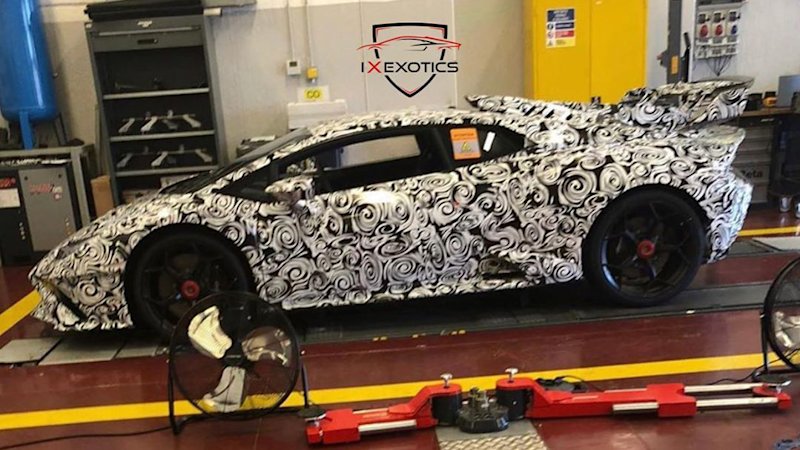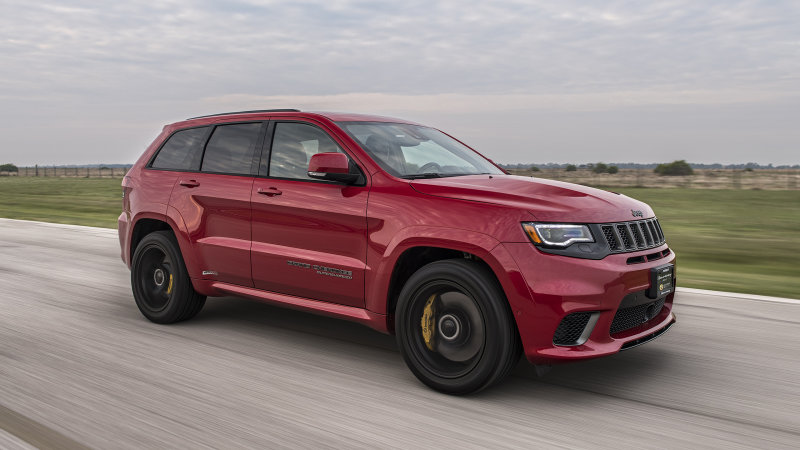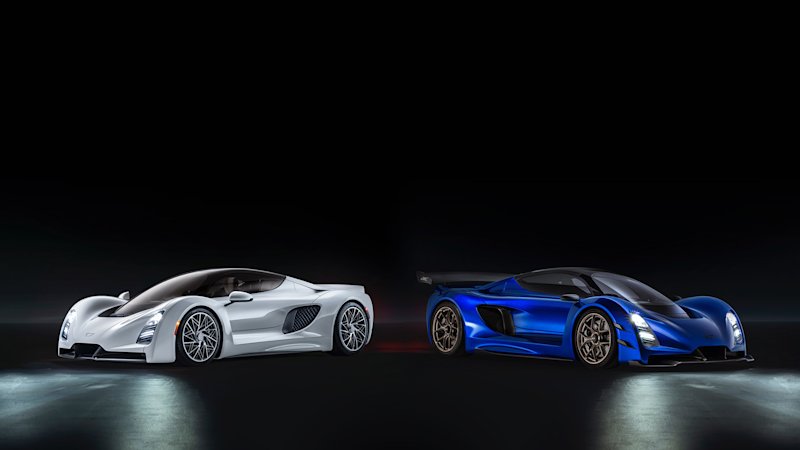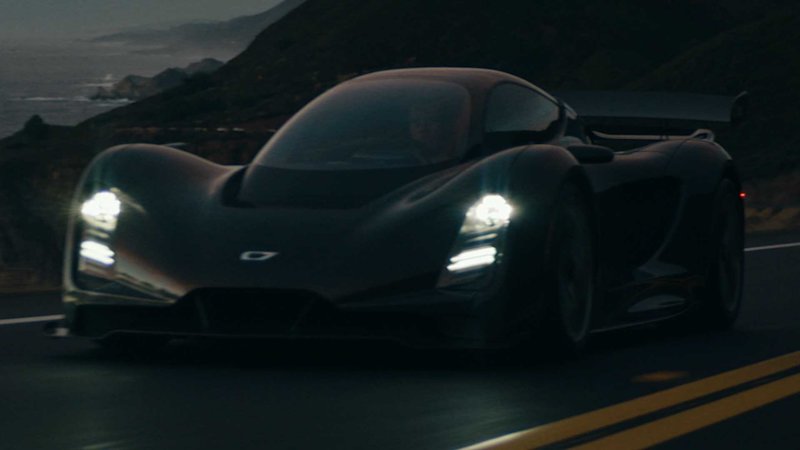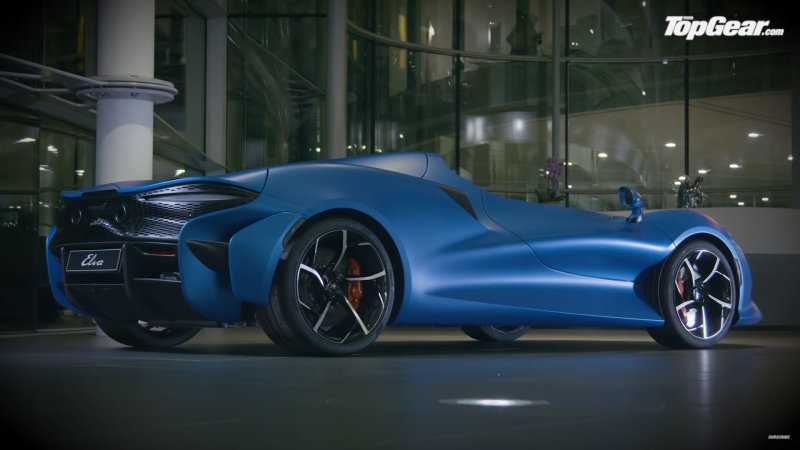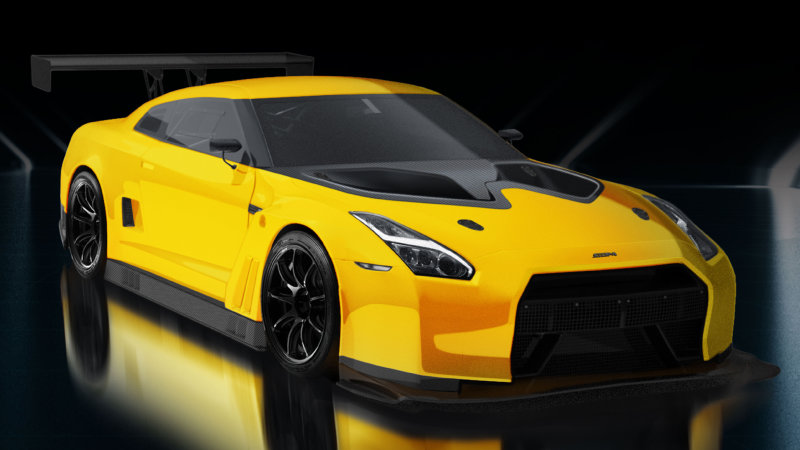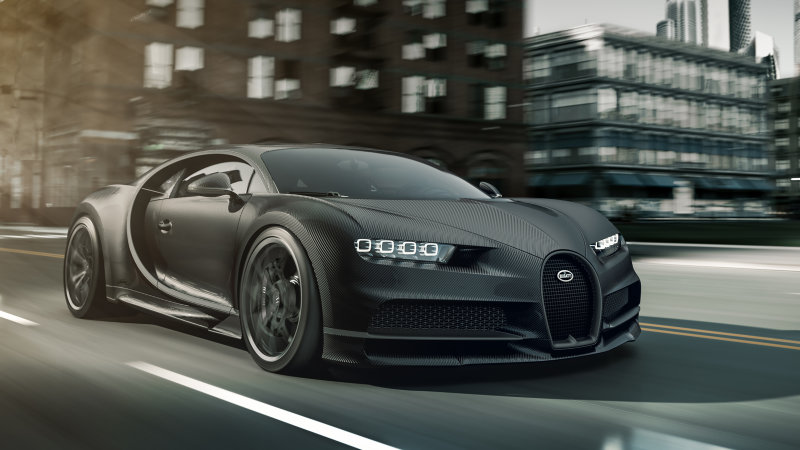LOS ANGELES — To get our hands on Hennessey’s 1,000-horsepower Jeep Grand Cherokee Trackhawk HPE1000, we agree to meet Vinny Russo in an alley across the street from the practice facility of the Los Angeles Clippers. Noon sharp.
We hear the Hellcat-powered SUV before we see it, its raspy idle reverberating off the concrete buildings and expanse of fence. It rounds the corner and comes into view, its thunder growing as it slowly approaches over the dirty broken asphalt. It sounds like my big-block ’69 Camaro: thump, thump, thump.
Russo climbs out. “Sorry I’m late,” he says before reaching back in and shutting down the Jeep’s blown Hemi. The silence seems to hang in the air along with the Grand Cherokee’s spent hydrocarbons. It smells like an old-school big block, too.
“This is John’s personal truck,” he says handing me the SUV’s red key. “It’s the one on the internet going 181 mph with a Christmas tree on top and all that other cool stuff. It’s got 20,000 miles on it of …”
He pauses for a second. I’m sure he wants to say abuse. That the Jeep has seen 20,000 miles of abuse. But he’s a good PR man so he stopped himself. I can see him searching for another word. Any other word. He clears his throat.
![]()
![]()
“It’s got 20,000 miles on it of R&D,” he says. “Just make sure you have it pointing straight and have a good grip on the wheel the first time you go to full throttle. It’ll shock you.”
John, of course, is John Hennessey, and his company Hennessey Performance down in Houston offers up an extensive range of 1,000-hp machines, from McLarens to supercharged Camaros, Corvettes and Hellcats. It’s a good place to drain your 401(k).
After modifying his personal Mitsubishi 3000GT VR4 and driving it to a class record at Bonneville in 1991, he built his first Dodge Viper in 1992, the Venom 500, opened Hennessey Performance and paid the bills cranking out disgustingly powerful Vipers for the next decade and half. Then he built his own supercar about 10 years ago, the Venom GT. Steven Tyler famously bought one.
![]()
![]()
At some point he began turning up the wick on pickups and SUVs. Today Hennessey says it has built more than 10,000 specialty vehicles, and last year trucks and SUVs made up about 50 percent of its business. There’s the usual fare on the menu, including 600-hp Navigators, 650-hp Escalades and 800-hp Tahoes, but the company’s products can get pretty wild. Its V8-swapped Ford Raptors are popular. Or how about a Chevy Silverado with two rear axles? Not into a 6×6? Maybe I can interest you in a $225,000 1,000-hp Hellcat-powered Jeep Gladiator called the Maximus?
Last year we drove its least powerful and least expensive model, the 360-hp VelociRaptor Ranger. So this time we asked for something more extreme. Hennessey offers three versions of the Jeep Grand Cherokee Trackhawk, the HPE850, HPE1000 and the HPE1200, which the company says makes 1,200 hp and 1,000 lb-ft of torque at the crank on 109-octane fuel. We settled for the one with only 1,000 ponies.
![]()
![]()
Hennessey says the modifications it makes to the Jeep’s supercharged 6.2-liter Hemi V8 increases its output from 707 hp at 6,000 rpm and 645 lb-ft of torque at 4,800 rpm to 1,012 hp at 6,500 rpm and 969 lb-ft torque at 4,200 rpm. And trust me when I tell you, meeting a guy at a gas station with a new ZR1 Corvette and telling him your SUV has 245 horses more than his supercar is a hoot. You should have seen his face.
With the Trackhawk’s all-wheel drive, 20-inch Pirelli Scorpion All-Season Run Flats and launch control putting the power down, the guy’s Corvette didn’t stand a chance and he knew it. Hennessey says the Jeep hits 60 mph in 2.6 seconds and blows through the quarter mile in 10.2 seconds at 133 mph — and it really does feel that quick. According to Jeep, a stocker hits 60 mph in 3.5 and runs the quarter in 11.6 seconds.
![]()
![]()
So how do you make a Grand Cherokee that weighs 5,363 pounds accelerate like a Lamborghini Huracán Evo? Hennessey basically adds boost and fuel. The size of the factory-installed IHI root-type supercharger is increased from 2.38 liters to 2.65 liters. It also spins faster than before thanks to a smaller pulley, up from 14,600 rpm, and generates a maximum of 18 psi of boost, up from 11.6 psi.
A Kenne Bell Boost-A-Pump is installed to increase fuel pressure and volume to the Fuel Injector Clinic 1,000cc injectors, which supply fuel at a rate of 110 lbs/hr. Hennessey also adds tubular headers, an open element air filter and reflashes the ECU, raising the engine’s rev limiter from 6,200 rpm to 6,500 rpm in the process.
That’s all there is to it. The SUV even looks pretty much stock under the hood, and Hennessey doesn’t touch its suspension, brakes, all-wheel drive system or its ZF-supplied 8HP90 eight-speed automatic. And it can all be yours for $34,950, not counting the cost of the Jeep, of course.
![]()
Hennessey backs the package with a one-year / 12,000-mile warranty. Unfortunately it does void the Grand Cherokee’s factory warranty, and Hennessey doesn’t guarantee any of its kits are CARB legal. So California residents may have a problem at the smog check. “The rest of the states haven’t been an issue,” Russo told us.
Around town you can’t help but feel like you’re the king of the hill in this thing. How can you not? You’re driving one of the quickest SUVs on earth. A mommymobile that runs with hypercars. And it’s a serious sleeper. Hennessey removes the Trackhawk badge from the tailgate and the Supercharged lettering from Jeep’s doors. Unlike Saleens and Roushes, which are covered in branding, he adds a single and subtle Hennessey script to the left side of the SUV’s rump. Either you know, or you think it’s a V6 with a (very loud) exhaust leak.
After driving it for a couple of days, you start getting cocky. I remember passing a guy in an SRT Grand Cherokee and thinking, “Man, what a loser. He only has 475 hp to play with. Must be frustrating.”
Quarter throttle at any speed leaves traffic in the dust. Half throttle and you’re at 100 mph before you know it. Full throttle is simply violent. Use the launch control, which unleashes the SUV at 2,800 rpm, and the thrust is so brutal it ripped my kid’s sunglasses from the top of her head, sending them from backseat into the cargo area and up against the tailgate.
![]()
And the entire time the Hemi spits a cacophonous mix of exhaust thunder and high-pitched supercharger whine. It isn’t just supercar fast, it’s supercar loud. At wide-open throttle, it sounds like the Tasmanian Devil, its eight-speed grabbing gears at 6,000 rpm, still 500 rpm below the engine’s power peak. At red lights, people in Teslas and Priuses roll up their windows in a feeble effort to escape its ruckus, sealing in their smug. One man’s noise is another man’s music, and the Jeep is playing Extreme Metal.
Unfortunately there’s a metallic resonance between 1,500 and 2,000 rpm, which is a problem when you’re putting around town. “It sounds broken,” my wife said. But above 2,000 the tone levels out and the engine is pretty quiet on the highway. At 80, the Jeep cruises like a stocker, but the big blown Hemi’s presence is always felt. Even at a steady 2,200 rpm, it sends a slight thump through the Grand Cherokee’s chassis like an elevated heartbeat.
In perfect comfort, with the family and dog onboard, we cruised this 1,000-hp beast a few hours to grandma’s, averaging 13.6 mpg on the highway and just over 12 mpg in about 400 miles of mixed driving. Honestly, we were expecting worse.
Maybe Hennessey should consider a 6×6 version.
Related Video:




